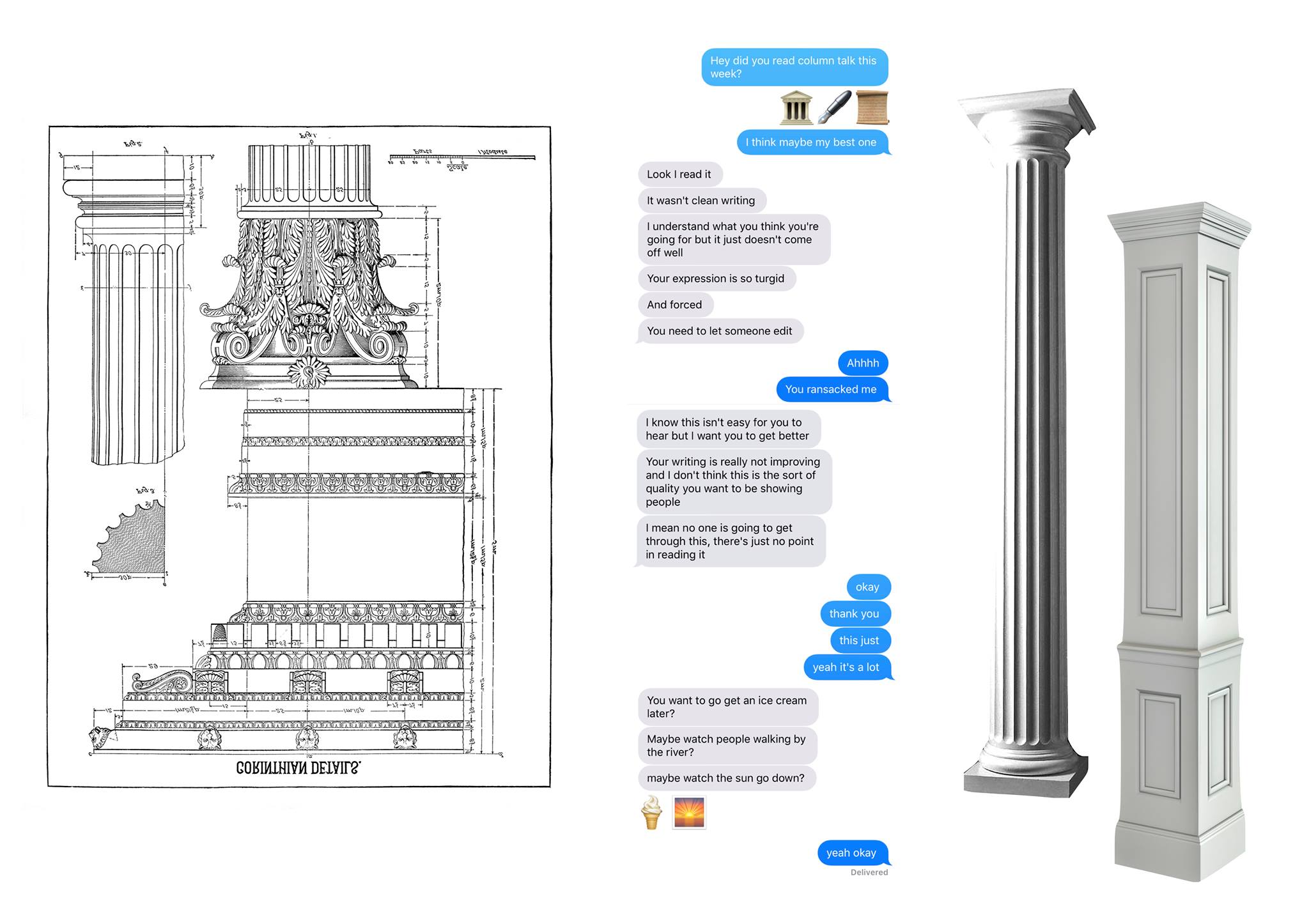Consider the momentous event in architecture when the wall parted and the column became.
—Louis Kahn
First, and perhaps least significantly, we may regard the Doric column. Of all the orders of columns —and this cannot be disputed by anyone— the Doric is the simplest and most unpretentious column. (This is of course unless we consider the Tuscan column a primary order, which we should not do, since it is not Greek and not of the original three orders. In fact, the Tuscan order is a later and inferior subset of the Doric order). Doric columns have an unremarkable capital (crown) with a prismic rectangular abacus (top of crown) and slightly tapered echinus (part connecting crown to column shaft). The shaft, which often broadens very slightly downwards, is fluted in its formal state, but can be unfluted.
No one can tell you who conceived or designed the column, but know they created a pillar of western architecture, and so they live. Doric columns, given neoclassical revival in France and Germany through the 18th century, transcended their architectonic utility to become a symbol of venerable Republican values. In the 19th century, a Parisienne customs house bearing Greek Doric columns suggested incorruptibility; in a Bavarian Protestant church they promised a return to an untainted form of spirituality. They were equally connotative in the United States, frequently supporting the exterior of libraries, banks and court buildings. The Doric Column came to be seen as an unornamented and dependable figure of American sentimentality, like Atticus Finch or Abraham Lincoln. Today they form a protective phalanx at the entrance to the monument of the latter, until very recently a site of great honour and significance.
Visit the Temple of Artemis at Corfu, the Temple of Hera at Olympia, the Temple of Poseidon at Sounion, or the Parthenon at Athens to see the inviolable stillness of the thing. Column on Doric Column faces you rigid and unwavering. Place a hand on an individual base, if permitted, and feel the philosophical significance of Doric design. The fact this column was made 2000 years ago means very little. It had to be made sometime. It stands now, and it is about us.
Words by Harry Peter Sanderson
This article first appeared in print volume 88 edition 2 STOP
Column Talk is a regular column in which a student of art or architecture examines a column or column-related artefact.

